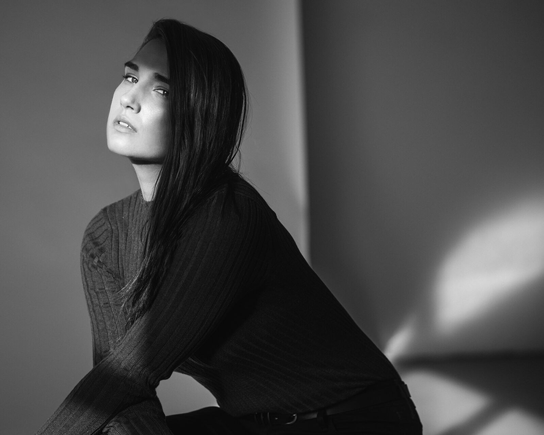Meghan Merkus is currently a freelance concept artist and illustrator producing otherworldly characters, environments, scenes and features that look like they jumped right out of a high-resolution video game. Though, her journey to get to where she is today was not easy nor clear-cut.

Based in Toronto, Canada, Merkus went through various college programs, a personal emotional ordeal, a concussion and trial and error before she went into art as her “safe haven to heal”. She happily found the perfect line of study at Seneca College which helped her use art to fit into the modern 21st-century art industry.
The following interview with Meghan Merkus follows her on her path in becoming a concept artist and peers into what the digital art industry looks like today.
What inspired you to use concept art as a form of artistic expression?
I have always been in love with art. More importantly, with concept art, I just fell in love with the idea that you can build worlds and that your creativity could create something that wasn’t real. This also tied back into my childhood where I loved playing with video games and reading books which I used back then in my escape from reality. Just like then, with concept art you get to dive into a fake world, make up a film, characters and have only your own rules to follow by. You got to do whatever you wanted and it was great. So now having the chance to create those worlds that people can escape into is fantastic and I just love the idea of creating that for people.
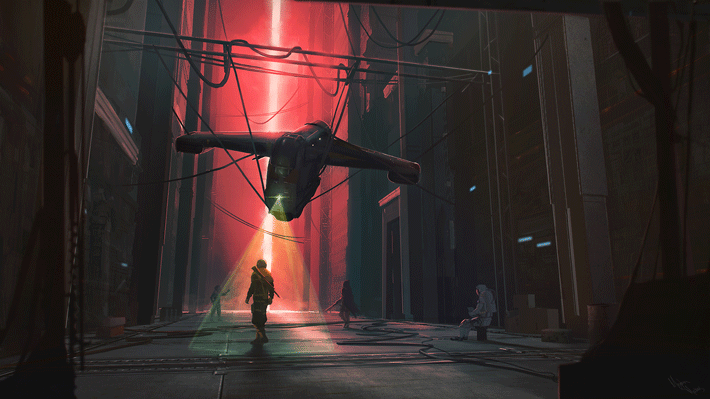
Later, I also began the process of trying to find a career and seeing how I could fit art in the industry. It took me a little while, but I eventually started looking into concept art for video games and film. Digital art was a useful medium because companies use it more than traditional art. It was also easier to create as when you make a mistake you can simply click Ctrl + Z to erase, delete a layer or start over. It’s fresh, it’s clean and there’s no cleanup. With traditional art, if you screw up - you screwed up. You have to start over on a blank page. It’s not as forgiving as digital art.
What did your journey to finally becoming a concept artist look like?
I started the journey of training myself for concept arts and illustration. I ended up going to Max the Mutt College of Animation, Art and Design, a private college in Toronto, before I had an accident and fell down a flight of stairs, giving myself a concussion. I later had to drop out of school. It was quite bad, I was in and out of it for two weeks but fortunately got my tuition back.
Unfortunately, due to financial reasons and lack of government support to fund my art dream at the private college, I set my sights on other colleges where I could receive support: Sheridan College and Seneca College. I got into Seneca and started with Art Fundamentals, but felt like it was a cakewalk. I didn’t feel like I was learning. So I ended up changing my program to Animation and realized that it too absolutely wasn’t for me. Due to a teacher’s strike, the college offered students to change programs again. It ended up being that the third time was the charm and I applied to the Illustration program and it became everything that I wanted.
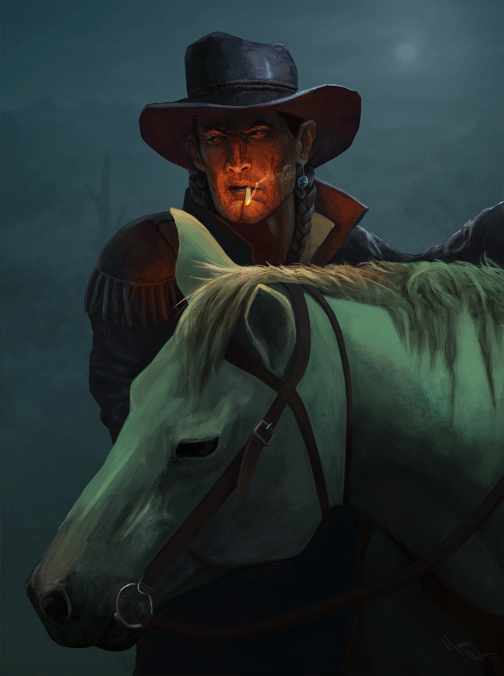
I was incredibly happy with it and my teachers made it a magical experience. But unfortunately, after I graduated in 2020, COVID-19 hit. So now, I am on the job hunt journey trying to figure out who’s really hiring, which has been a struggle. With COVID-19 and everything becoming remote, companies can hire illustrators from all over the world, from Los Angeles to Asia, and the competition has become incredibly fierce. So at the moment, I am freelancing and taking on projects based on commission. Lately, I have done a piece for George Stroumboulopoulos, a Canadian media personality appearing on MuchMusic and hosting Hockey Night in Canada and CBC music.
What can you credit as being of the greatest help in bringing you to where you are today?
I do still take a lot of online courses. However, the biggest help is from the 'Concept Art Association'. They pair people up with working industry professionals to help teach emerging artists the industry. I was really lucky and got paired with these two powerhouse women, Carolina Tello Zeleski and Gina DeDomenico.
Carolina is an Art Director at Sanzaru, an AR/VR Studio, and Gina is an award-winning costume designer that has worked on numerous films and popular TV shows. These two women have done so much for me and I owe them so much for the knowledge and insights that they have shared with me. I truly love that they are women, and got to share with me the struggles of working in the industry and raising a family at the same time. True superheroes.
What type of art pieces do you specifically focus on?
I really enjoy the character portrait-based illustrations because I like to narrate the story of the character. For example, I have a piece called ‘The Mermaid’ and she’s covered in mud, slime and blood; it shows her as not some beautiful mermaid nor some siren that could be evil. There’s a story behind her and I wanted people to look at that image and pull it apart to figure out the little pieces that are involved. The same is with the ‘Woodland Witch’ piece that I had created. She’s an old lady in the forest, but I actually drew inspiration from the Mari Lwyd, a Welsh folk festival where they take the corpses of their horses and they dress them up with ribbons and cloth. It’s absolutely terrifying, but it’s meant for good luck and blessings.
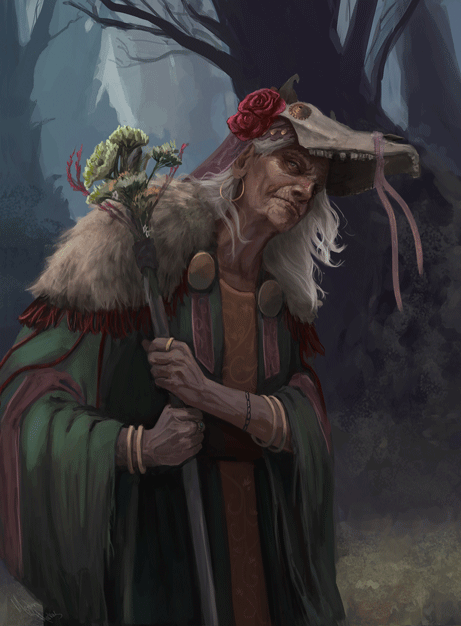
Among your illustrations and artworks, which are some of your favourites?
My favourite ones are the ‘Woodland Witch’, the ‘Cowboy Keyshot’, the ‘Moonlight Cowboy’, the ‘Crusade’, and the ‘SheepHerder’. I hold these ones at a higher standard and that’s what I keep trying to beat. I always try to do better than those. It feels like that’s me - like that’s my style. Most of the time when you ask an artist about their style they’ll tell you that they don’t know what it is or how it looks like. But I can look at those illustrations and say that those are me. I like the colors that I used, the characters etcetera, and that’s what I want to be known for. If someone sees it I want them to say, “Oh, that’s Meghan’s work. I can absolutely tell, that’s definitely her.”
What is the most difficult part about creating your pieces?
The art block that can come with it and always having to just be original and create something that nobody has seen or thought of. Sometimes it's definitely hard to fully imagine things that haven’t already existed.
What aspirations and goals do you have deep in your heart for your artworks ?
I would love for them to inspire others. That would be the top one. And I would also love it if a company saw them and thought that they were fantastic, that they needed me on board because what I do is good enough to be used there. That they felt like they could broadcast them and use them to inspire others. I’d be in love with being able to join a bigger team.
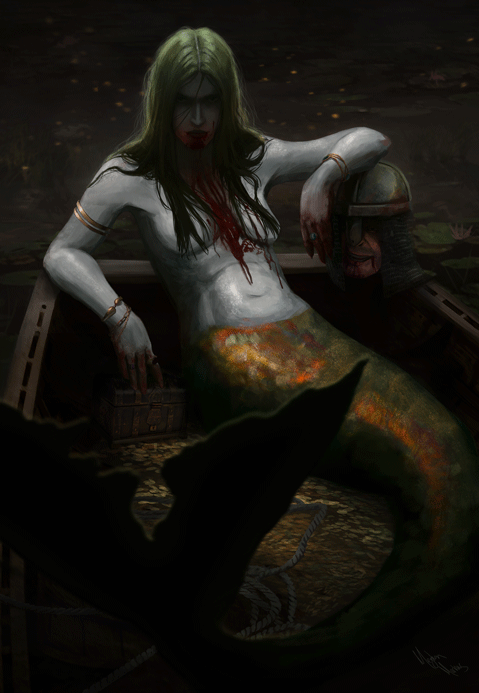
What would you tell other concept art or illustration students who are studying right now in school? Is there any particular advice that you would like to share?
Focus on what is important and cut out the fluff.
With college, especially for Seneca College, it was very broad. It was all a very broad stroke. With visual development, also came comic books and children’s illustrations and editorial. Yes, I had to do them to realize that they weren’t for me, but then I recommend that once you figure out what you want and what you like, to cut out the rest. Don’t put in 110% and burn yourself out doing children’s illustrations if you dream of working for Star Wars or creating adult content. Don’t waste your time doing something that’s not going to make you progress further.
To find out more about Meghan Merkus and see her other works, visit her website, portfolio, Instagram and TikTok.
